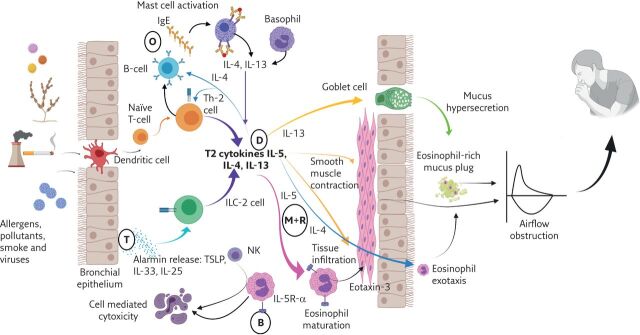Figure 1.
The role of the T2 inflammatory cascade in asthma pathophysiology and the sites of action of biologic therapies. Allergens, pollutants and cigarette smoke and viral infections trigger the bronchial epithelium to release alarmins (TSLP, IL-33 and IL-25), while dendritic cells drive naïve T-cell maturation to Th-2 phenotypes. ILC-2 and Th-2 cells, alongside activated mast cells and basophils, produce the T2 cytokines: IL-5, IL-4 and IL-13. These lead to: eosinophil growth and maturation (driven by IL-5); smooth muscle contraction, goblet cell hyperplasia, mucus hypersecretion and mucus plugging and eosinophil migration from blood to tissue (predominantly driven by IL-13); and eosinophil airway exotaxis, Th-2 cell population expansion and direction of B-cells to produce IgE (predominantly directed by IL-4). Sites of the biologic therapies are indicated by circles (B: benralizumab; D: dupilumab; M+R: mepolizumab and reslizumab; O: omalizumab; T: tezepelumab). IL-5R-α: IL-5 receptor alpha; NK: natural killer cell. Figure created with BioRender.

